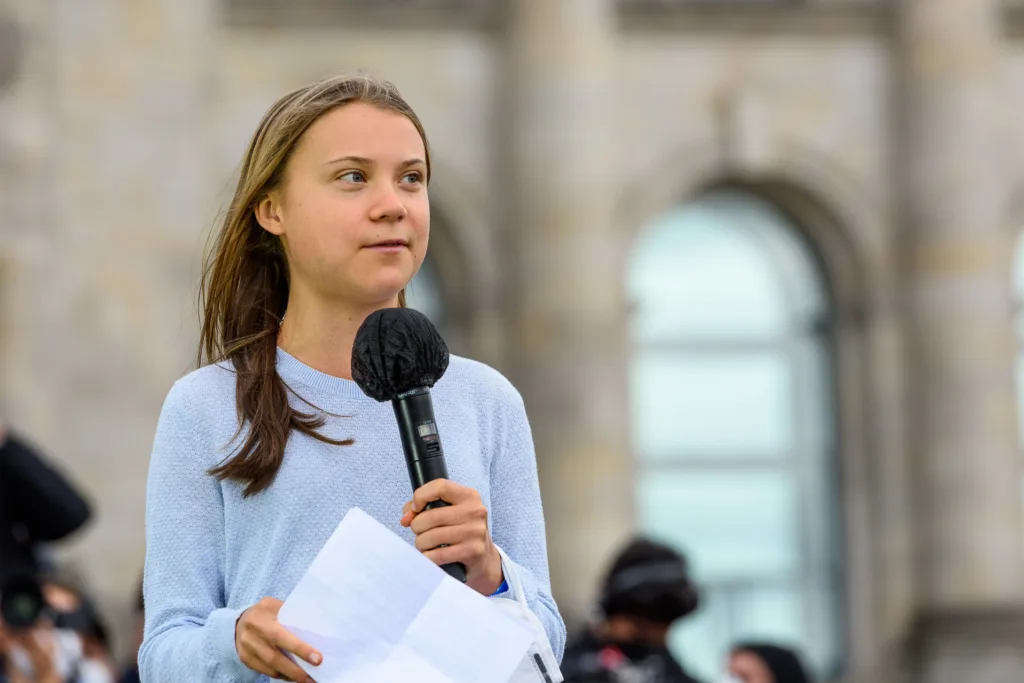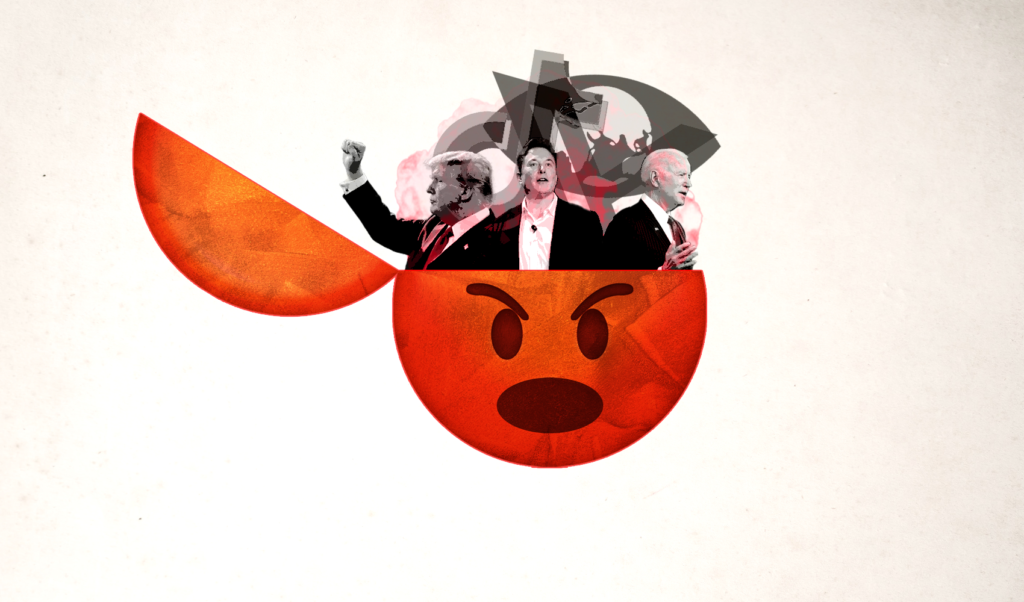Our online world is getting angrier, is it by circumstance or design?
Just like politics, our worldview is becoming less about what we think and more about what we feel. There’s a reason for that.
 Civil unrest appears to be rising, but it may be worth contemplating what is driving the emotional reaction. : conceptphoto.info, Flickr CC BY 2.0 (https://creativecommons.org/licenses/by/2.0/)
Civil unrest appears to be rising, but it may be worth contemplating what is driving the emotional reaction. : conceptphoto.info, Flickr CC BY 2.0 (https://creativecommons.org/licenses/by/2.0/)
Just like politics, our worldview is becoming less about what we think and more about what we feel. There’s a reason for that.
Our world appears to be angrier.
We seem to disagree more with each other, especially online. When Facebook had its own whistleblower in 2021, one of the things she said was that “publishers are saying, ‘Oh, if I do more angry, polarising, divisive content, I get more money.’ Facebook has set up a system of incentives that is pulling people apart.”
The Cambridge Analytica scandal showed how social media manipulation worked for political ends almost 10 years ago and while social media firms have changed since then, and are more aware of the worry of manipulation, we, the users, still experience the world as an angrier, more polarised place.
It continues, to X (formerly Twitter) making money from advertising next to tweets that media analysis firm NewsGuard claimed was from users “advancing false or egregiously misleading claims about the [Israel-Palestinian] conflict.”
There has been much theorising that so-called filter bubbles were the cause of our polarisation. The theory went that the algorithms running our media feeds were serving us only content we agreed with.
This has been shown to be wrong. Some now believe that it is our constant exposure to things we fundamentally disagree with that is making us disagree even more.
If we look at history, this time of anger and polarisation is likely not unique.
Surely in times of great upheaval, extreme anger and polarisation also happened – for example during the French Revolution.
However, what is certainly new is our level of exposure to polarising opinions and events, and this exposure happens in large parts on social media, where we spend so much of our time and, increasingly, get our news.
On TikTok, #wartok is full of images from wars in Palestine and Ukraine. Competing accounts supporting either side in any conflict can draw in a lot of money.
There is, in other words, money in emotions, because emotions mean engagement, which means clicks, and clicks mean advertising revenue and the potential for direct donations as well for some content creators.
But let’s be frank, even successful creators make small money compared to the media companies that host and profit from their work.
Emotions in humans are powerful and difficult to explain.
On one hand, everyone has emotions, and we understand them on some level, but they are deeply personal and hard to quantify.
Research in emotions falls within vastly different categories, from the psychological and medical to the sociological and language based, and often overlap.
Some research, particularly from social sciences and humanities, try to understand what emotions do, how they are used to achieve specific ends either directly or indirectly in communication.
The need to understand emotion
It is increasingly vital to understand emotions as part of communication in a world where so much information comes through multimedia primarily video formats, because emotions can be accessed in any layer of the information.
There is something about video and image that makes us respond differently to written content.
Perhaps it’s the way visuals grasp us in an instant, or perhaps the several layers of information we need to process. Social media prefers visuals now with the pivot to video or, as internet commentator Ryan Broderick aptly put it, we live in a “video first internet” now.
To fully understand video content, it is necessary to think about the visuals AND the words AND the audio. Video and the direct human-to-human contact it provides is powerful.
When we see someone talking to us in a video, we see their face, their eyes, their expressions. It feels as if we are close. We might build a kind of relationship with content creators we watch a lot – just as with other celebrities – as we get to know them by watching them.
Music in audio-visual content can also vastly change how we perceive something, and is a gateway to our emotions.
The same techniques that make us root for someone in a film or feel empathy for their situation can be used in any kind of audio-visual format – everything from your neighbour’s funny cat video to political candidates arguing for why you should vote for them.
One thing emotions can be used for, particularly for political ends, is create what is known as affective polarisation.
Polarisation, a buzzword at the moment, describes a distancing or increasing divide between people with differing views. Affective polarisation is mostly used to mean a creation of an in-and out-group through emotional means, or a “them” and an “us” of some kind.
A not directly political version of this could be supporters of opposing sports teams, who resort to not simply disparaging the performance of the opposing team, but also resorting to name-calling that dehumanises or casts them as “less than”.
Using similar tactics in politics can be very effective too – this is for example when we see politicians and supporters attack their opponent on grounds of personal character or morals as an extension of their viewpoints. On our social media feeds, this may look like people focusing more on disliking people than disagreeing with ideas.
A fascinating aspect of affective polarisation is one, which our research points to: all kinds of emotions can be used to this end.
Anger is effective in driving engagement online, and is therefore easily pushed to more of us as it is shared and responded to across social media.
But many emotions can be used.
Making us laugh with someone can make them relatable as a political candidate. Think of former UK PM Boris Johnson and his ability to play to humour, or how humour can be used against someone by making them a laughing stock.
Even love can be used to polarise us.
Scholar Sara Ahmed illustrates in her work how love can be used to justify hate. Her example is that of white supremacists’ use of love of nation and “race” to justify hating people of a different skin colour.
Different political leaders do this in different ways. It largely appears to be a personality thing, but they all use emotions as one way to convince constituents.
For example, Brazilian ex-president Jair Bolsonaro often used contempt for his opponent during his 2022 campaign, while then-Australian prime-minister Scott Morrison in his campaign showed a lot of satisfaction with what his government had achieved as a way to argue he should be re-elected.
But even positive emotions are, in some way, meant to inspire something like anger – or at least distancing – from others. Sometimes legitimately so. There are actions and opinions that many people find disagreeable for good reason – but sometimes also to stir up emotions that are a motivator for political action.
Research shows that some amount of polarisation and disagreement can be positive in democracies, that such factors engage more people in politics and voting.
When we disagree, we use democratic tools to solve those disagreements. However, in more extreme, destructive cases, affective polarisation can lead to people seeing those with opposing views as less than human. At this point, it becomes harder for democracy to continue to function.
The best we can all do in cases where political content makes us feel something, is to take a moment to reflect on why we are feeling this way.
Do we really feel angry, or sad, or touched, or did we get drawn in by effective communication? Is it legitimate disagreement or are we being manipulated?
Sebastian F. K. Svegaard is a PhD in media studies. He currently works as a post-doctoral researcher at the Digital Media Research Centre at Queensland University of Technology, where he is part of a research team that studies the dynamics and drivers of polarisation and partisanship online.
Dr Svegaard’s research receives funding from the Australian Research Council through Laureate Fellowship FL210100051 Dynamics of Partisanship and Polarisation in Online Public Debate.
Originally published under Creative Commons by 360info™.













